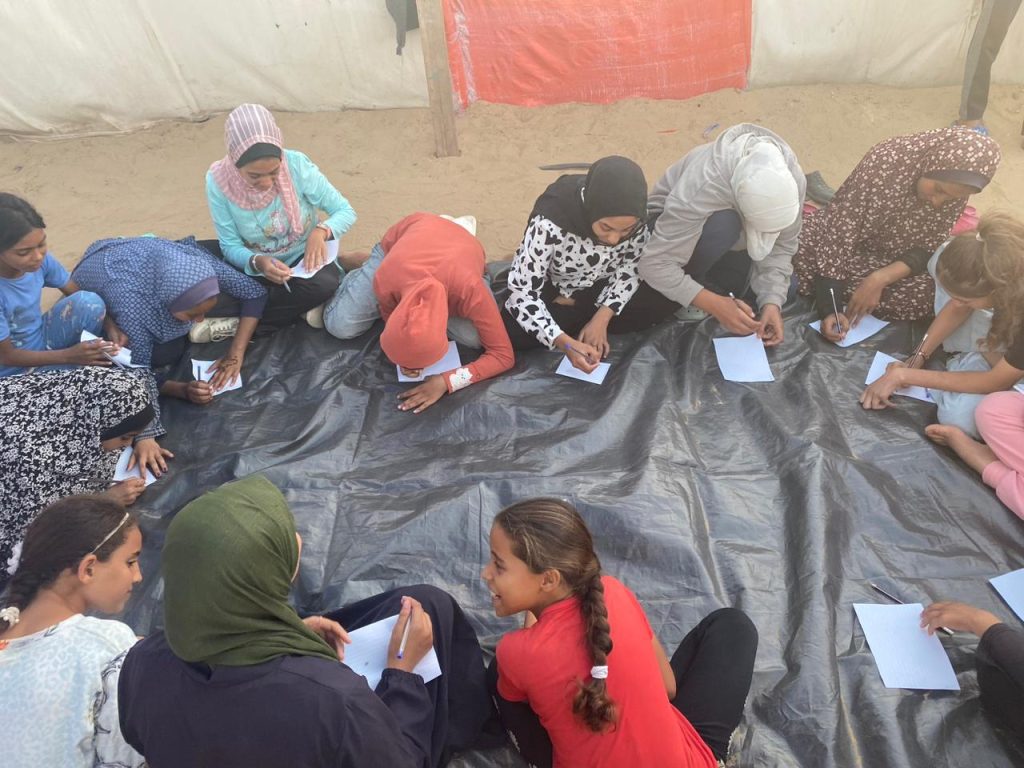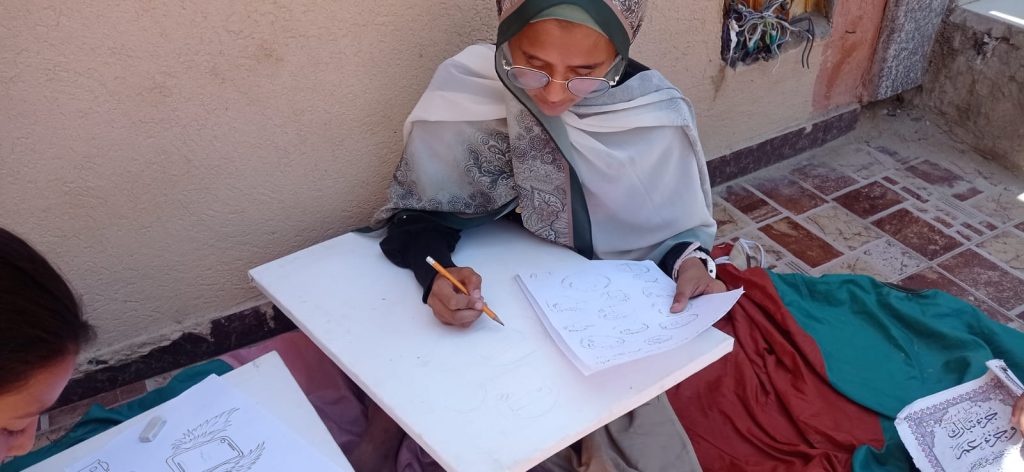
Stories from memory
Focus: Cultural preservation and artistic heritage documentation
Who: 200+ direct participants, 50,000 indirect
Where: Jerusalem, Palestine
When: November 2024 — ongoing
Partner: Khazaaen Social Archive
Every poster, flyer, exhibition catalog, and artist’s sketch tells a story about lived life in Palestine. Working alongside Khazaaen Social Archive Association, we support the crucial work of documenting and preserving the stories of Palestinian artistic and cultural movements since 1948 – ensuring that the voices of resistance, creativity, and resilience are never forgotten.
Palestinian art has always been intertwined with survival. From the Nakba through the intifadas, from Land Day to the ongoing struggle for liberation, Palestinian artists have used their work to process trauma, assert identity, and imagine freedom. Yet so many of these stories remain untold, their materials scattered or lost, their creators aging without having shared the full depth of their experiences.
This project centers on preserving the archive and stories of Suleiman Mansour, one of Palestine’s most iconic artists whose paintings like Jamal Al Mahamel (The Camel of Heavy Burdens) have become symbols of Palestinian resilience. Mansour’s direct involvement in documenting his own work and the artistic movements he witnessed represents a unique opportunity to capture these stories from the artist himself, ensuring authenticity and depth that external researchers could never provide.
What we do together
Working with Khazaaen’s specialized archival expertise, we support comprehensive documentation that captures both the materials and the stories behind Palestinian cultural movements. Khazaaen leads the collection, preservation, and digitization of over 1,000 pieces of “ephemera” – the posters, brochures, catalogs, and everyday materials that tell the real story of how Palestinian artists organized, created, and sustained their work under occupation.
The project includes intensive training for 12 young Palestinian graduates and university students, building local capacity in archival practices while ensuring the next generation has the skills to continue this vital cultural preservation work. These participants learn not just technical skills, but how to see everyday materials as historical documents worthy of protection and study.
Through direct collaboration with Suleiman Mansour himself, we document the stories behind his most significant paintings, capturing his memories and insights about the artistic movements he witnessed and helped create. These stories become part of a growing digital archive accessible to researchers, artists, and communities worldwide.

Project activities
- Collection and preservation of 500+ materials documenting Palestinian artistic movements since 1948
- Documentation and digitization of 500+ pieces from Suleiman Mansour’s personal archive
- Online publication of 1,000+ materials through Khazaaen’s digital platforms
- Training program for 12 young Palestinians in archival and preservation techniques
- Production of commemorative notebook featuring Mansour’s artwork to promote archival awareness
- 3 public lectures featuring Mansour and academic experts on Palestinian cultural history
- Youth seminars and cultural programming
- Development of new volunteer archivists to continue the work long-term
Community-driven cultural preservation
Every aspect of this partnership is designed and led by Palestinian cultural preservationists who understand that saving these materials means saving Palestinian identity itself. Khazaaen leads all archival work, applying their expertise in collecting and preserving the “ephemera” that formal histories often overlook – the daily materials that reveal how communities actually lived, organized, and created.
The young Palestinians trained through this project become cultural guardians in their own right, equipped to continue documenting and preserving the ongoing story of Palestinian artistic resistance. Suleiman Mansour’s direct involvement ensures that these stories come from the artists themselves, not from external interpretations of their work.
With this project, we are contributing to a living archive that Palestinian communities can use to understand their own cultural evolution, that researchers can access to tell more complete histories, and that future generations can draw from to continue the tradition of artistic resistance.
Preserving the past, inspiring the future
Help us continue supporting the vital work of Palestinian cultural preservation. Join the 1000 for Palestine and invest in programs that ensure Palestinian artistic heritage survives, thrives, and continues inspiring new generations.